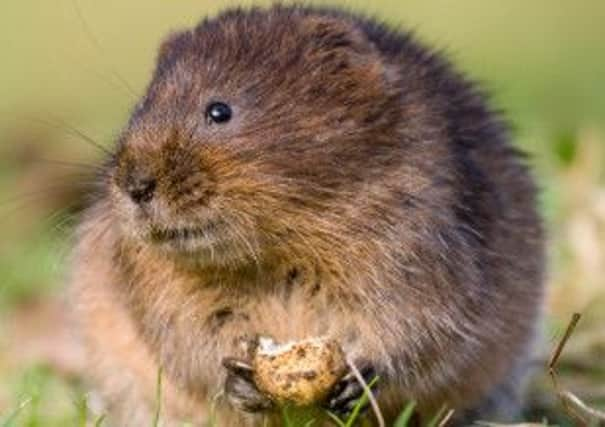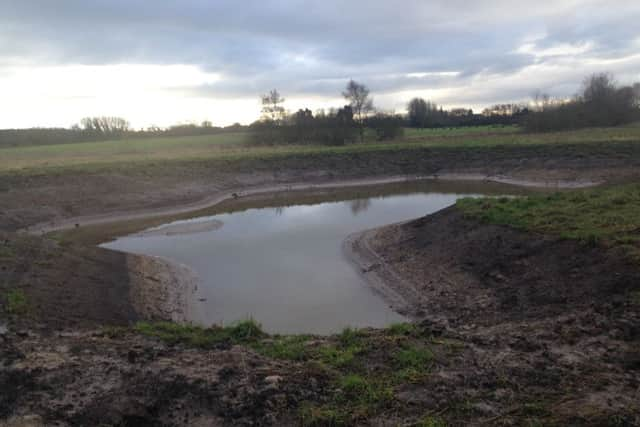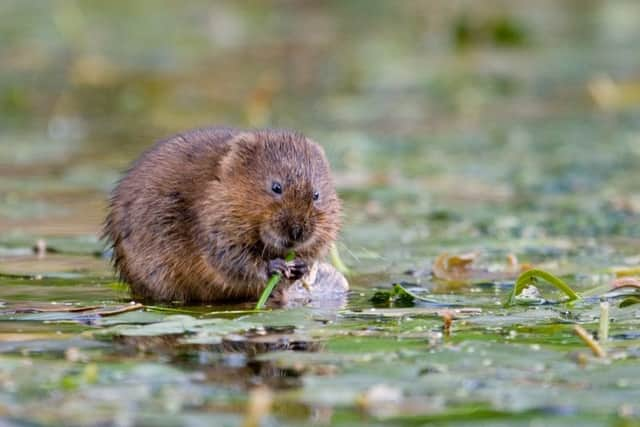Wildlife: Say hello to our river residents


Damselflies hover on invisible strings above the water, a grey heron adopts its statuesque pose on the bank, and a splash betrays the presence of a clumsy coot.
Rivers and waterways are fantastic places to look for wildlife, from those familiar furry faces to the mysteries that lurk under the surface.
Advertisement
Hide AdAdvertisement
Hide AdWhile many river habitats are under threat, Staveley and Ripon Loop Nature Reserves remain fabulous havens for some of Britain’s most-loved water dwellers, and Yorkshire Wildlife Trust is working hard to ensure that they stay that way.


Water is everywhere you look at Staveley Nature Reserve, from small ponds, to boggy fields and the River Tutt along its northern border. This mosaic of watery habitats in turn supports a cornucopia of fabulous insects and beasties. Dragonflies and damselflies make the most of the abundant waters and warming temperatures to begin their bid for breeding. These creatures are evolutionary cousins, but dragonflies are the athletes of the family with fast powerful flight and wings outspread at rest.
In contrast, damselflies have spindly bodies, hesitant flight and wings folded back at rest. The large red damselfly is the first to be seen around water sources at this time of year, and its red and black body make the ultimate spring style statement. However, a grand total of 21 dragonfly and damselfly species have been recorded at Staveley Nature Reserve.
Do your best Sherlock impersonation as you watch for the subtle clues that animals leave behind. While otters are rarely seen out and about on the River Tutt, look out for distinctive prints in the mud, about 6 to 9 cm in size, with five webbed toes and a large rear footpad. For more of a challenge, find a dense patch of vegetation alongside slow-moving water and scan the edge for signs of the water vole. These creatures make up for their shy secretive nature by being the ultimate showy neighbours, excavating palatial networks of burrows and producing perfectly trimmed gardens outside the entrance, with neat food piles beyond. This charismatic small mammal has declined alarmingly in recent decades, largely as a result of habitat loss and predation by the invasive American mink.
Advertisement
Hide AdAdvertisement
Hide AdDon’t forget to keep your eye out on the water and listen out for tell-tale splashes too. Brown trout, perch and common frogs live on the reserve and in turn draw in the majestic grey heron to feed.


Ripon Loop is a hidden gem for river wildlife. This dynamic reserve sits inside the largest meander of the River Ure, and is left to the full mercy of the water as it carves its ever-changing route through the landscape.
While it is looking a little post-apocalyptic at the moment, the shifting sand banks and shingle shore provide excellent habitat for sand martins and the occasional oystercatcher. Meanwhile, a prehistoric river monster lurks beneath the water’s surface; the lamprey. What these eel-like creatures lack in charm they make up for in other ways, with an ancient heritage dating back to the earliest back-boned animals and impressive circles of teeth for feeding on other river animals. These fish are absent from many rivers thanks to the introduction of weirs and other obstructions, but we think they deserve a little more love and appreciation. The Amazon may have river dolphins but the Ure has lampreys.
Many of Britain’s most-loved water dwellers are now threatened by pollution and habitat loss, so it has never been more important that we manage our river habitats with these creatures in mind. The good news is that Yorkshire Wildlife Trust has been doing something about it.
Advertisement
Hide AdAdvertisement
Hide AdLaura Watson, Living Landscapes Assistant, has been working in close partnership with the Internal Drainage Board on a project to boost wildlife along the River Tutt. The key to helping many of our troubled species is reintroducing variety. By creating several ponds alongside the river at Staveley, there are now shallow waters for young fish to shelter in, and the wiggly margins will soon provide habitat for the likes of grey herons and frogs.


Our volunteer group has installed two new tree logs on the river banks. These will create small pockets of slow-moving water with sediment habitat for invertebrates, with little impact on the overall flow of the river itself. We have been planting plenty of young trees at Staveley, which will grow up to provide shade for critters that prefer cooler waters. Such simple small-scale changes to our management will have tremendous benefits for wildlife and humans alike.
Contact [email protected] to let us know what river wonders you spot.
You can also sign up for The Wildlife Trust’s 30 Days Wild challenge to reconnect with nature every day across June at wildlifetrusts.org/30DaysWild.